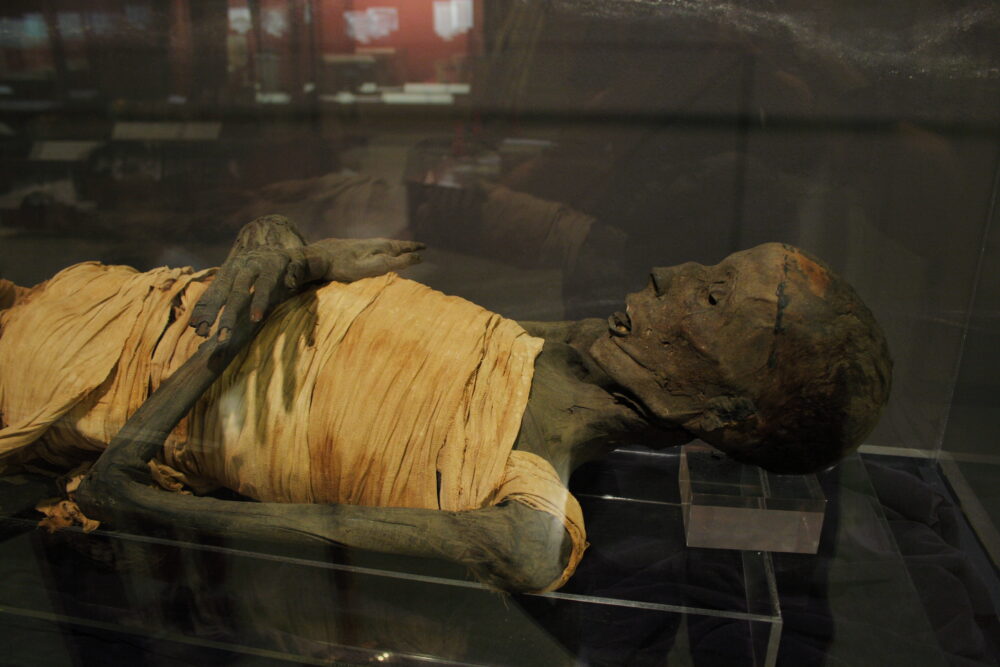The word “mummy” often conjures images of King Tut, the Pyramids, and Indiana Jones’s excursions into royal tombs. Lying within the polished stone sarcophagus, the mummy’s body is perfectly preserved, as if frozen in time. The skin, now leathery and dry beneath the bandages, stretches over bones that hint at a once-regal face. While mummification is not exclusive to the ancient Egyptians, they certainly pushed the practice to its limits. Deeply entwined with their religious beliefs, Egyptian mummification sought more than just preserving a body after death: The elaborate burial technique was believed to help guide the deceased toward divinity.
“The skin, now leathery and dry beneath the bandages, stretches over bones that hint at a once-regal face.”
“Beneath these bandages also lies a story of interconnected civilizations and specialized knowledge.”
The 70-day mummification process typically began with removing all organs except the heart — believed to contain a person’s intellect — and soft tissue from the body. The Egyptians removed the brain using a special hook through the nostrils, while the other organs were removed by hand through an incision in the abdomen. The organs were then placed in canopic jars, which were buried with the mummy.
With the organs removed, the body was then packed with natron, a type of salt, and left to dry for several weeks. The now-dried body was then wrapped in layers of linen bandage, which were often decorated with amulets and other symbols designed to protect the deceased in the afterlife. A sticky resin was applied beneath these bandages to desiccate the flesh further and increase adherence to the body.
Finally, a special headdress and mask were placed over the face of the mummy, mirroring the deceased’s appearance. The mummy was then placed in a wooden or stone sarcophagus, which was decorated with the carvings and opulence often exaggerated in movies.
Yet, beneath these bandages also lies a story of interconnected civilizations and specialized knowledge. A recent excavation of a 2,500-year-old embalming workshop in the Saqqara necropolis revealed the complex trade networks behind the ingredients used in mummification. Chemical analysis of labeled pots identified mixtures of botanical resins and other substances, some of which came from plants that grow as far away as southeast Asia.
The study also revealed the ancient Egyptians’ exceptional understanding of material properties. Embalmers took advantage of specific biochemical properties, carefully heating or distilling mixtures of ingredients to enhance their antibacterial, antifungal, or odoriferous effects. Pots were labeled with instructions from “making beautiful the skin” to “make his odor pleasant,” creating an intentional methodology for using substances in embalming. The substances identified also point to the existence of complex systems for the harvesting and transformation of products. For example, the production of wood tar through pyrolysis involves control over thermal processing and specialized knowledge, hinting at a far more developed science than previously understood.
As we look into the past, beneath the bandages we have placed over our broken history as a race, a beautifully collaborative and intelligent story emerges. Egyptian mummification was built upon and fostered long-distance exchanges, developed through scientific processes into an art form, and laid the foundation of an entire civilization’s culture. Although mummification is no longer commonly practiced today, the marks we leave on history will stand the test of time, much like these bodies. As Indiana Jones once said, “Who knows? In a thousand years, even you might be worth something”.
Image courtesy of Wikimedia Commons

